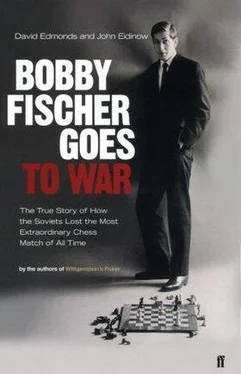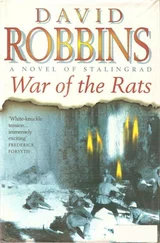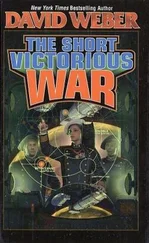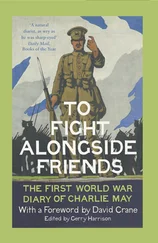
José Raúl Cafablanca y Graupera, world champion 1921–1927, giving a simultaneous display. NEW IN CHESS MAGAZINE
The splendor of Fischer’s chess lay in its cleanliness, its simplicity; if his moves were notes, they were struck not to impress an audience, not to delight himself by their wit or ingenuity, not to achieve beauty (though they had their beauty). They arose out of the logic of the board and Fischer’s profound yet unfathomable sense of harmony.
There is a passage in Stefan Zweig’s novella The Royal Game, that celebrates the uniqueness of chess, while also drawing parallels with music and mathematics.
Every child can learn its basic rules. Every bungler can try it. And yet it requires within those unchanging small squares the production of a special species of master, not comparable to any other kind, men who have a singular gift for chess, geniuses of a particular kind, in whom vision, patience and technique function in just as precise divisions as they do in mathematicians, poets and musicians.
One artist who proclaimed the aesthetic qualities of chess was a moving force in the Dada movement, Marcel Duchamp. Duchamp achieved notoriety in 1917 through showing a urinal as an exhibition piece under the title Fountain. It symbolized his contempt for bourgeois art and was a pioneering exhibit in the revelation of everyday artefacts as objects d’art. But at this time chess was already on its way to taking over Duchamp’s life, eventually ruining his marriage. On his honeymoon, he analyzed chess problems until, it is said, one night, in a rage, his wife glued the pieces to the board. Later he abandoned art altogether for chess—competing for France in the chess Olympiads. He had a unique perspective of both the artistic and the chess worlds. “From my close contact with artists and chess players I have come to the conclusion that while all artists are not chess players, all chess players are artists.”
Of course, creativity is a necessary but not a sufficient condition for high achievement at the game. Just as professional musicians have to practice continuously, so chess professionals need constant study. They must be abreast of the latest opening innovations. They must plow through the games of their peers. They are always topping up their mental store of patterns, improving their judgment and deepening their feel for various types of position. They also need constant competition in order to remain battle sharp.
Along with artistic vision, memory is a vital ingredient in the chess player’s makeup. And all world-class chess players have shown an astounding ability to recollect games. Fischer’s total recall struck even fellow professionals with awe.
However, a chess player’s memory is of a particular kind. During World War II, a Dutch chess master and psychologist, Adrian de Groot, made a breakthrough in our understanding of the chess mind. De Groot conducted a series of experiments in which he showed a variety of chess positions to a variety of players, from the expert to the beginner. They were exposed to these positions for just a few seconds, after which they were given a chess set and asked to reconstruct them. Their ability to do so correlated closely with the strength of their chess. Max Euwe, who took part in these tests, never failed to place each piece correctly.
De Groot showed his subjects typical chess positions such as one might come across during a typical game. Later, psychologists widened his experiment by conducting similar tests with randomly placed pieces. The results were intriguing. When the pieces were positioned arbitrarily, the expert performed no better in reproducing the board than the beginner. What the expert could do was recognize regular patterns of pieces. Thus, after the castling maneuver on the king’s side of the board—when the king moves to the knight square and the rook leaps over it—white will routinely have several pieces on certain squares (for instance, the king on the gl square, a rook on fl, and pawns on the f2, g2, and h2 squares). A chess player needs almost no time to absorb such a familiar cluster of pieces. Such clusters can be regarded as akin to phonemes in language; they are the game’s basic building blocks. The top chess masters can instantly make out thousands of such clusters.
Just as some people have an affinity for language, some will also have a natural aptitude for pattern recognition and retention, which is then enlarged by study—perhaps physically expanding the relevant area of the brain itself, as tests have shown happens to London taxi drivers who have to memorize all London streets to gain a license.
This capacity to recall positions has led to staggering public feats, one from grandmaster Miguel Najdorf. Najdorf was born in Poland in 1910 but was in Buenos Aires for the chess Olympiad when German tanks crossed the border into Poland in 1939. He stayed in Argentina, and during the war he took up a challenge to play forty boards “blindfold.” The term blindfold is chess player’s argot; in practice, Najdorf sat with his back to his opponents as their moves were read out to him. This required keeping in his head the positions of 1,280 pieces (initially) on 2,560 squares. He had undertaken the challenge after losing all contact with his family, hoping they would read of his exploits in the press. He won the vast majority of games, but there is no evidence that this news reached home.
Given the skills required of the chess player, and the repeated mental strain from playing game after game after game, it is small wonder that, in George Steiner’s words, “this focus produces pathological symptoms and nervous stress and unreality.”
The image of the near insane chess champion must be approached with caution. For the vast majority of grandmasters, mastery of chess is combined with a normal social and emotional life. Spassky had a life outside chess recognizable to chess players and non—chess players alike, a family, hobbies and passions, feuds and friendships. Yet the number of great players whose behavior away from the board has been eccentric, bordering on the outlandish, cannot be ignored. Some champions have clearly lived on—and a few have crossed—the fine line between genius and insanity.
Before Fischer, the United States had produced only one player with an unquestionable claim to being the world’s best, Paul Morphy, who came from a wealthy New Orleans family a century earlier. Morphy was Fischer’s favorite player of all time; he characterized him as “perhaps the most accurate chess player who ever lived.” As a young man, Morphy demolished the foremost players in the United States before traveling to Europe in 1858 in search of stronger opposition. There, too, he trounced everybody in sight. Like Fischer, who came to identify with him closely, Morphy’s exploits over the board captured the nation’s headlines and imagination. His name was used to market various products, such as cigars and hats. Although he did little apart from chess, Morphy loathed any suggestion that he was a professional, deeming it more respectable to live off an inheritance from his parents. He also despised the chess “scene.” Still only in his twenties he descended into a state of paranoia and depression and became a recluse. Occasionally he was seen wandering the streets of New Orleans, muttering to himself in French. At the age of forty-seven, he was found dead in a bathtub, surrounded by women’s shoes.
The first official world champion, the Prague-born Wilhelm Steinitz, who did scratch a living from chess, became convinced at the end of his life that he could beat God, even if the Lord were granted a pawn and a move head start. Akiba Rubinstein, a Pole, one of the preeminent players in the early twentieth century, was certain that other players were out to poison him; he lived in an asylum from which he journeyed to the chessboard. In the same decade, the Mexican master Carlos Torre removed all his clothes while traveling on a public bus in New York. His breakdown may have been triggered by a relationship with a young woman that had gone sour. From that moment on, he never recovered sanity. Was chess partially responsible? International master Bill Hartston, a psychologist, says, “Chess is not something that drives people mad; chess is something that keeps mad people sane.” Clearly, it failed to do this for Morphy and several others. What about Fischer? His later life appears to supply the answer.
Читать дальше













